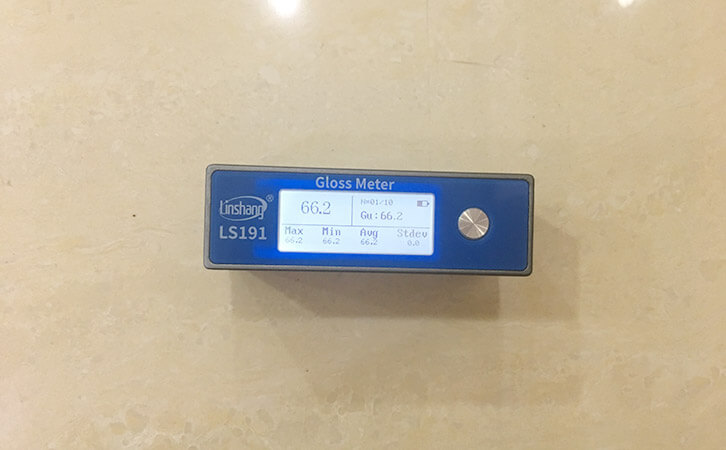What is Gloss Meter?
Gloss meter, also called gloss tester, can be used to determine the surface gloss of ceramics, paints, inks, plastics, marble, aluminum, hardware and other materials. Having said so much, what is gloss? Gloss is the property of directional selective reflection on the object surface. Different bright spots appear on the surface or an image of an object overlapping the surface is formed. Gloss is the ability of a surface to reflect light when it is illuminated by light.
A common gloss meter is a high-precision, miniaturized gloss meter manufactured in accordance with the ISO-2813 standard. It is suitable for measuring specular gloss of paints, inks, plastics, stone, flooring and wooden furniture surfaces.
The general use of the gloss meter is to press the measurement button. The instrument is placed on the black glass standard board and the adjustment knob is turned to make the displayed value the same as the standard board nominal value. Then the instrument is placed on the white ceramic standard board. The error between the displayed value and the nominal value of the white ceramic standard board should not be greater than ± 1.2 GU, otherwise the standard board should be considered dirty and other issues. This process does not need to be done every time. When the error exceeds the acceptable range, recalibrate according to the above method. The sample can be measured after calibration. When the measured value exceeds 199.9 GU, the display overflows 1.
Gloss meter has wide range of applications. For this reason, many gloss meter features are also very obvious. When choosing the gloss meter, we should consider the angle. All light sources reflect from the surface and the level of the amount of reflected light is called the surface gloss value. Gloss value is measured in gloss unit (GU), which corresponds to a standard value of approximately 100GU. Gloss can be divided into 3 general ranges: low gloss, semi gloss and high gloss.
Each range is best measured with its own angle. To know which angle is most suitable for measurement, it is better to start from 60 degree. If the result is between 10-70GU, the coating can be referred to as semi-gloss and is best measured with this angle. If the result is less than 10GU, the product is called low gloss and should be measured at 85 degree gloss meter; if the result is higher than 70GU, the product is high gloss. It is best to measure with 20 degree gloss meter. All angles are calculated from vertical angles.
The above is the introduction of the gloss meter in this article. Hoping these information can help the customers choose the gloss meter.
